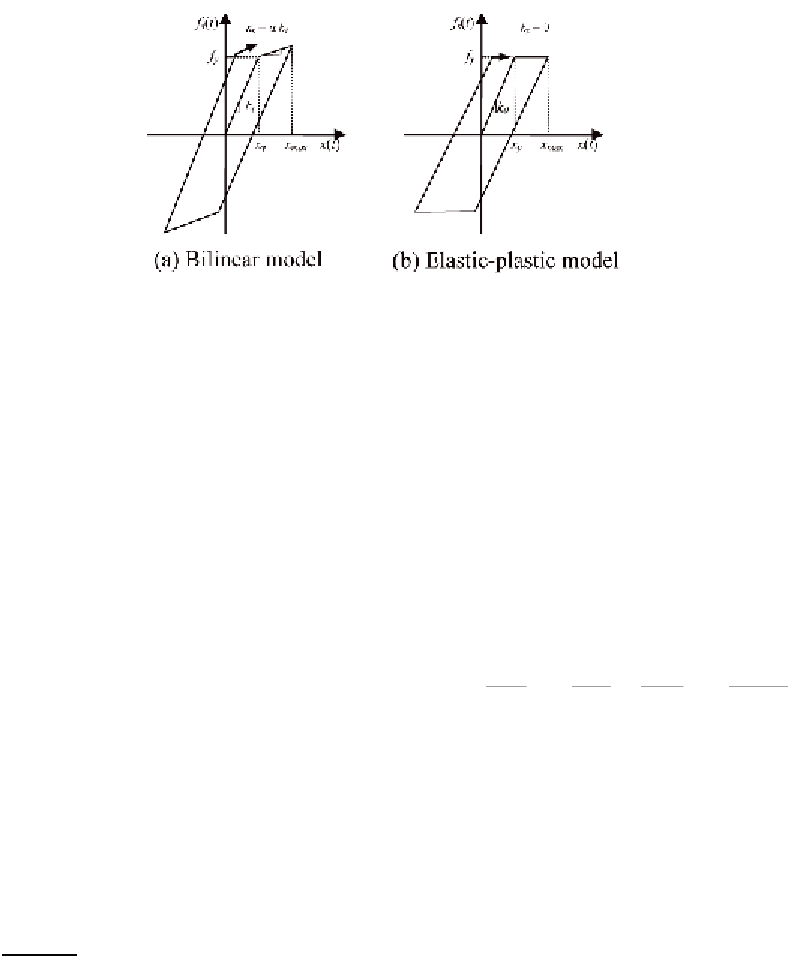Geology Reference
In-Depth Information
Figure 1. (a) Force-displacement relation for nonlinear materials
E
/ (
f x
)
quake and how fast it gets dissipated). Damage
indices can be estimated by comparing the re-
sponse parameters demanded by the earthquake
with the structural capacities. Powell & Alla-
habadi (1988) proposed a damage index in terms
of the ultimate ductility (capacity)
µ
u
and the
maximum ductility attained during ground shak-
ing
µ
max
:
H
y
y
DI
=
(4)
H
µ
−
1
u
A robust damage measure should include not
only the maximum response but also the effect
of repeated cyclic loading. Park and co-workers
developed a simple damage index, given as (Park
et al, 1985, Park & Ang 1985, Park et al, 1987):
x
−
−
x
µ
µ
−
−
1
1
x
x
E
f x
µ
µ
E
f x
max
y
DI
=
=
max
(2)
DI
=
max
+
β
H
=
max
+
β
H
µ
x
x
PA
µ
u
y
u
u
y u
u
y
y
u
(5)
However
DI
µ
does not include effects from
hysteretic energy dissipation. Additionally, this
damage index may not be zero for undamaged
structures. A damage index that overcomes this
problem has been proposed by Khashaee (2004):
max
,
are the maximum absolute
displacement and the dissipated hysteretic energy
excluding elastic energy.
x
u
is the ultimate defor-
mation capacity under monotonic loading and
β
is a positive constant that weights the effect of
cyclic loading on structural damage. Note that if
β
= 0, the contribution to
DI
PA
from cyclic load-
ing is omitted.
The state of the structure damage is defined
as: (a) repairable damage, when
DI
PA
<
0 4.
,
(b) damaged beyond repair, when
0 40
Here,
x
E
H
−
1
1
1
−
−
µ
µ
DI
K
=
max
(3)
−
1
u
Fajfar (1992) and Cosenza et al., (1993) quan-
tified damage based on the structure hysteretic
energy
E
H
:
.
≤
DI
PA
<
1 0
.
, and (c) total or complete


Search WWH ::

Custom Search